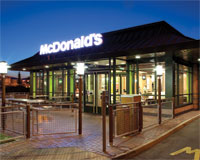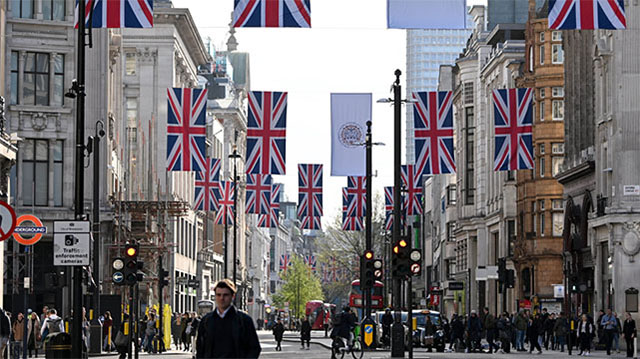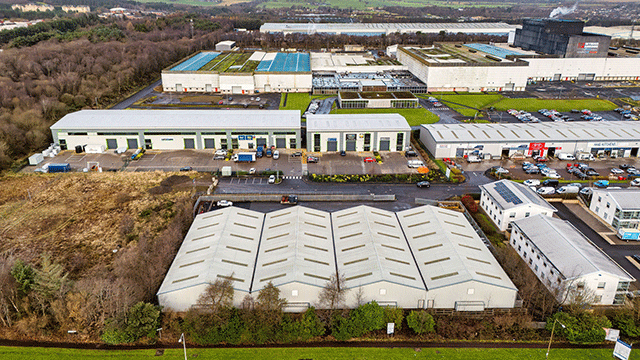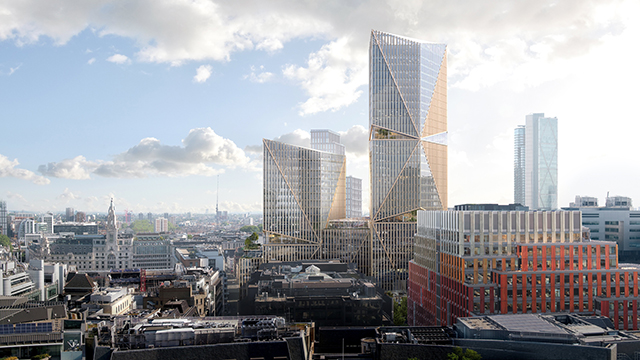McDonald’s has made no secret of its desire for UK growth, after announcing plans for hundreds of restaurant openings. Noella Pio Kivlehan spoke to Henry Trickey, the company’s head of property, to find out where the company is going, how it views the attitude of today’s landlords and the state of the high street.
Restaurant companies rarely admit to their shortcomings, never mind describing their restaurants as “awful” and “dated”; unless their head of property is Henry Trickey. The property chief at McDonald’s, is, of course, talking about the chain’s restaurants during the mid-2000s, when the UK business was at an all-time low, with declining sales and profitability.
“Our restaurants just looked awful – dated and old fashioned. We had an explosion of competitors – coffee shops and independents – that had smartened up their act. We hadn’t really invested in new food products and so we started modernising the customer experience. That really centred on the restaurants because first, we had to get people [back in through the door].”
In 2006, McDonald’s embarked on a big turnaround for the business and invested £300m on a refurbishment drive. The push to update 1,200 restaurants from a red and yellow theme to dark green with a modern feel will be completed this year. In one restaurant alone – Colchester Road in Chelmsford, Essex – the company spent £1.1m. As a result, overall, customer numbers have risen to 2.5m a day in the UK compared with just over 2m five years ago.
The company is now concentrating on its much-publicised expansion programme, and of course, the London Olympics (see panel, below). “There are a lot of other towns where we want to increase our penetration because there is significant demand and we don’t have enough stores to service the population. That would typically be most of the metropolitan areas.
“We want to acquire and open 30 restaurants a year, but we are focusing on drive-throughs because we have good high street presence and we are [already] in the retail malls,” says Trickey.
From its own research, McDonald’s believes there is room for up to 300 additional drive-throughs across the UK, with certain specifications. “Our typical drive-through restaurant would be on a busy road, having the advantage of cars passing you, and it’s critical to have a lot of cars in the area.
“But we are not a destination – we are highly convenient, we need good egress and good visibility. Customers will see the golden arches from a distance, and once they have seen them they will try and get to us. If we are on a retail park, we need a good generator such as a supermarket, or retail shops, a busy road and convenient access to a local residential population.”
Trickey says the company is committed to rolling out Road Chef restaurants. “They have 30 developments up and down the motorway network and we are rolling out stores within their MSAs.”
McDonald’s is also aiming to increase the number of 1,500 sq ft concessions it has in Asda supermarkets. At present, there are 29.
“We are in discussions with Asda,” says Trickey. “We are currently remodelling our part of the Asda estate. We have already done nine, and we are looking at the other 20. But that involves negotiations with Asda, and we are talking about potential new locations to operate within their stores.”
Trickey says there is “no huge urgency on our part” to expand. “We are working on getting the current ones re-imaged. The key for us is that it has to be 100% right. We have to go into [Asda’s] busy stores, and we need to have quality locations within them – close to the entrance and the exit with a high level of traffic going through the supermarket.”
Trickey says the decision, 10 years ago, to team up with Asda rather than other supermarket chains was taken because the two companies “share the same philosophy around providing good-quality products to customers with great value”.
London Olympics 2012
Trickey says McDonald’s is “very excited about the Olympics”, where it will have four restaurants at the Olympic park. Two will be for the general public, with one in the Athletes’ Village and one in the media centre.
The main public restaurant opposite the stadium is a 30,000 sq ft, two-storey temporary building, with 1,500 seats, which McDonald’s has said will be “the biggest and busiest McDonald’s restaurant in the world”. The company is keen to highlight the restaurant’s green credentials, and the fact it will be the most sustainable restaurant in the chain. After the games, the restaurant will be dismantled and recycled.
Development in a tough market
A McDonald’s in a pub might sound like a dream combination for some. And now it is set to become a reality – but without the alcohol. Drinkers have been bemoaning the number of pub closures, but for expansion-hungry McDonald’s, former pubs are being targeted for new restaurants.
“There are a lot of pubs coming on to the market and they provide a good opportunity for us,” says Trickey. However, he adds: “They are not without their problems. Sometimes the site can be a bit small and/or extremely dilapidated.”
New investment
Despite this, McDonald’s is willing to invest in the buildings because new retail developments are scarce, and is opening a pub conversion this summer.
Trickey says: “One frustrating area is the development side of the business. There are fewer developments coming to the market now than there were in the boom times, and fewer retail parks being built.
“Banks have not foreclosed on sites of three-quarters of an acre as we thought they might have done. Many don’t want to crystallise big losses in their assets.
Trickey believes the property market is going to be tough for the foreseeable future.
“The eurozone crisis isn’t going to help,” he says. “For anyone relying on bank funding to grow their business, it’s going to be difficult.
“As for the high street, there will have to be a correction in rental values over the next four to five years. There are just too many shops at the moment.”
Dealing with Landlords
With his firm’s portfolio of 1,200 restaurants – a 50/50 split of freehold and leasehold – Trickey has to deal with many landlords, who he says “vary enormously”.
“Some are very easy and interested in what we are doing as a business; they are keen on supporting our growth, such as allowing us to extend our properties and expand our estate. They also support our re-imaging programme.
“But other landlords are less interested and only want to get the rent in on time. We are a good tenant and have never defaulted on rent payments. We take leases as the McDonald’s Corporation, as opposed to franchisees. We always pay on time and we have never been into this ‘let’s look at paying monthly’.”
Trickey says he is “negotiating hard on [up to 40] lease reviews and renewals and looking to speak to landlords usually four years before lease expiry”.
He adds: “It always surprises me, even in high street locations, why not all landlords are keen to sort something out now, four years before a lease expires. If I was a landlord, and I had a covenant such as ours and the site had been heavily invested in by the company and looked good, I would be looking to secure my income for the long term and for the future, especially with high streets under pressure.
“We are not part of a group that lobbies landlords for lower rents. We are doing our own thing with landlords. We are negotiating hard and making sure the rents we set for the future are as low as possible.”











